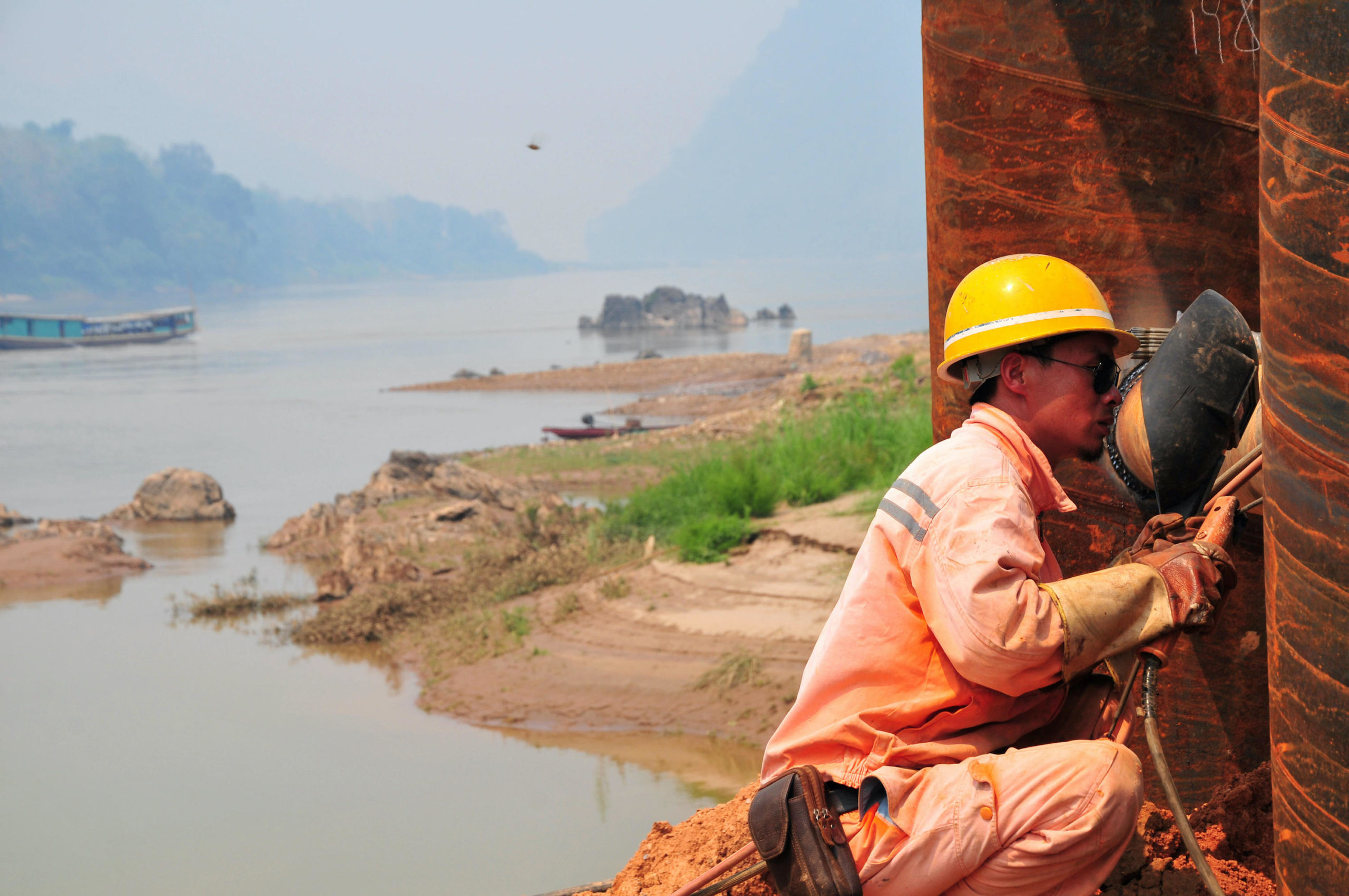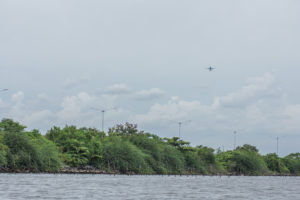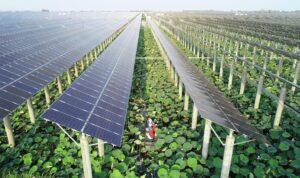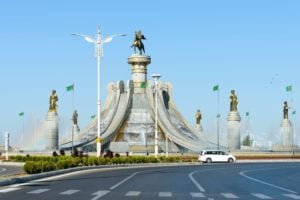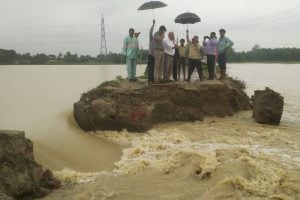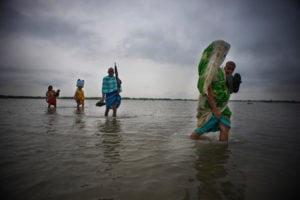With far-reaching implications for the upcoming elections in Myanmar and with the US tentatively wading into river governance, the Mekong region has become a contentious staging ground for China’s wider goals in Southeast Asia.
Sebastian Strangio’s new book In the Dragon’s Shadow: Southeast Asia in the Chinese Century draws on his more than a decade of reporting in the region to explore China’s influence from Laos to Indonesia. The Mekong region, in particular, shares borders and a long history with the country and is grappling with major infrastructure projects backed by China and national governments.

China Dialogue spoke with Strangio on the challenges facing Myanmar, Vietnam, Cambodia, Thailand and Laos.
The interview has been edited and condensed for clarity.
China Dialogue: As Myanmar’s election approaches, Chinese infrastructure investment is playing a high-profile role to the supposed detriment of the dominant National League for Democracy (NLD) party. How might the NLD’s turn to China affect large infrastructure projects in the near future?
Strangio: Since the Rohingya crisis exploded between 2016 and 2017, the response of Western countries to this horrific, barbaric crackdown has created an alienation with Myanmar that has allowed China to regain ground lost during the country’s opening to the West in 2011-12.
China has gone a long way to attempting to revive infrastructure projects that were suspended and to push its long-term goal of creating an overland corridor from Yunnan to the Indian Ocean. There has been a certain amount of progress on these projects already, and the China–Myanmar Economic Corridor has been created as a catch-all organising rubric for a lot of these infrastructure and integration projects.
In reality, not a huge amount has happened. The overall impression one gets is that the Myanmar government is very cautious about the implications of these projects. Even though it is heavily reliant on China, it is performing a very delicate dance to ensure that these projects serve Myanmar interests. I think we’ve seen that with the renegotiation of the Kyaukpyu port project that had its price cut by six billion dollars or so. The NLD’s likely victory at the elections will allow warm relations to persist, but I don’t think China is going to get everything its own way. The government in Naypyitaw is very cautious and worried about overreliance on Beijing.
How much of a sore spot do you think the Myitsone dam project is for the Myanmar government, considering its environmental and cultural impact?
One of the reasons the Myitsone dam is such a lightning rod for popular opposition is that its suspension was the first public move the government made to cement ties with the West after many years of isolation.
It’s very hard to restrain a superpower through rules alone.Sebastian Strangio
It was also a rare thing that ethnic minority people like the Kachin and the majority Burmans could agree on – an issue that touched the entire country. The Myitsone project was a symbol of the government ignoring the rights and interests of ethnic minority peoples – of the unequal distribution of power. And the Irrawaddy River is also a symbol of Myanmar culture, the cradle of its pre-modern civilisations. The idea that this would be strangled off by a massive Chinese dam project elicited a huge amount of concern with the Burman majority as well.
The NLD government is in a difficult position because China is clear it wants the project to resume and its government has applied a lot of pressure. But this would be hugely damaging for the NLD given the unpopularity of the project. One possibility is that it could be downgraded or cancelled in exchange for other, smaller hydropower projects.
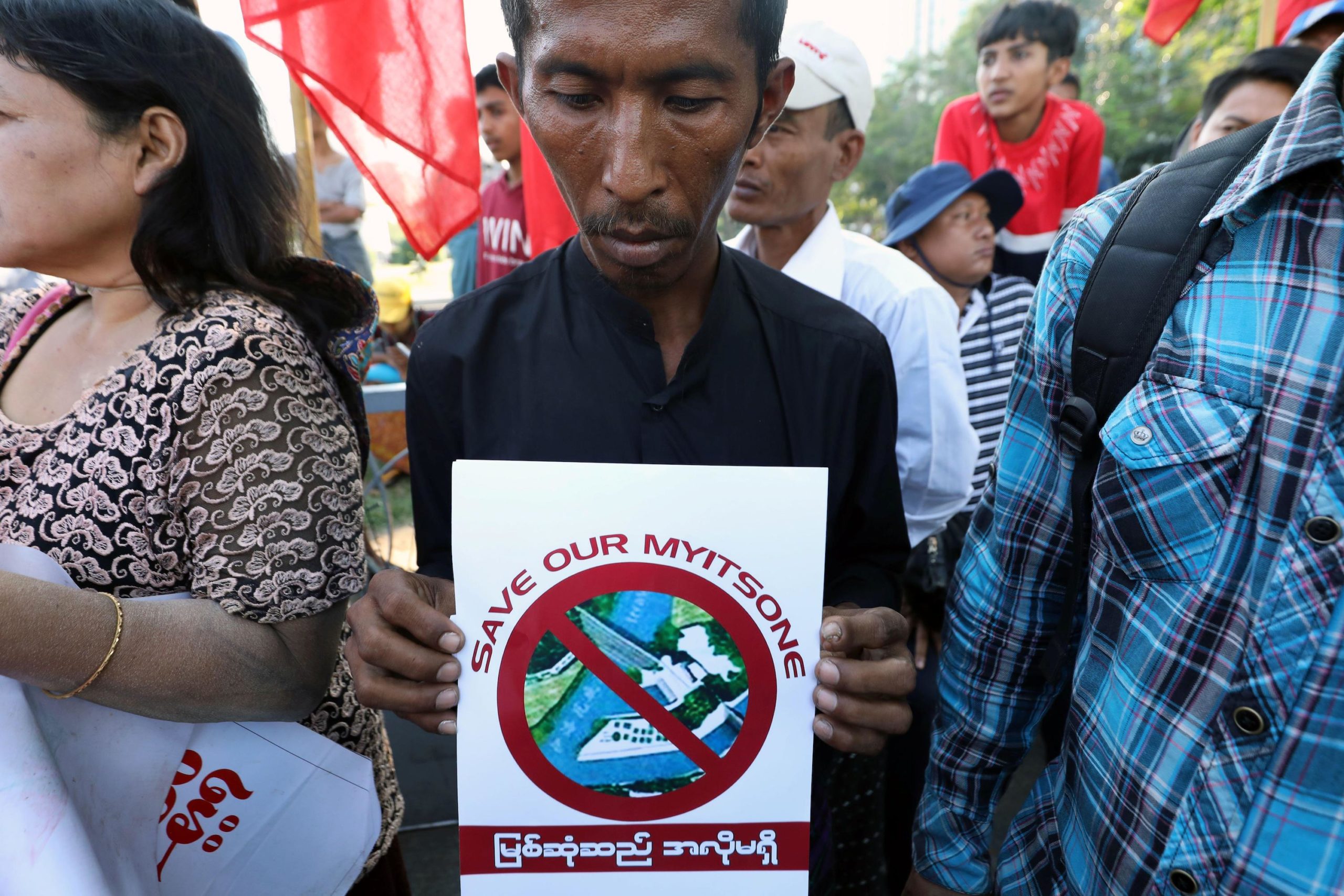
The Mekong delta sits far from China’s 11 mainstream dams on the Mekong but arguably has the most to lose. How might Vietnam and other Mekong countries better leverage transboundary governance to counter destructive development on the Mekong?
It’s difficult because sometimes the Chinese dams are a fait accompli. It is a challenge because these dams have already been built, the damage has already been done and the dams are inside China’s territory. It’s very hard to restrain a superpower through rules alone.
Now, China knows it has a huge amount of leverage. [Mekong countries] rely on China’s water flowing southward. But I’m not sure China has the upper hand on this issue. With the increasing publicity directed at China choking off the Mekong’s flow, despite some questions being raised about the research making that claim, there is growing international pressure building on this issue. That may be the reason China has begun to respond to downstream nations with promises of cooperation and data sharing. But all this cooperation will take place at Beijing’s sufferance.
It’s difficult to know whether an organisation like the Mekong River Commission, which doesn’t include China as a member, can really do much to force Beijing’s hand. At best it’s one piece of a much larger strategy aimed at pressuring China over this issue. There’s a good chance that things will improve, and China will become more transparent about what it’s doing with its upstream dams, but I think all of this will be done on China’s terms.
The US–Mekong Partnership is quite new, what do you think Mekong countries can get out of it?
The US government is trying to counter China and it’s no surprise that there is at least a rhetorical and financial commitment to the region, but honestly, this is a very small percentage of what China is offering under the Lancang Mekong Cooperation mechanism, which extends far beyond hydrology and data sharing. The LMC has become a full-blown pillar of the BRI and includes massive special economic zones, bridges, railways, pipelines and electricity grids.
This seems to me like a very welcome project on the part of the US, but there’s only so far you can go in ameliorating the impact of China’s geographic proximity to the Mekong region.
In your book you explain in detail the changes that have taken place in the Cambodian city of Sihanoukville due to Chinese investment. In recent weeks, environmental campaigners have met with arrests. What can Cambodian civil society do to counter such development?
To put it bluntly, not a lot. The Cambodian government has never really accepted the legitimacy of Cambodian civil society to have a say in decision-making, whether that be about infrastructure projects or about good governance. In the past, a little bit of space was carved out due to the presence of Western donor countries and others like Japan, whose assistance the government needed. But that’s changed with China’s rise to prominence in Cambodia.
Beijing is far away. Even if lawmakers recognise the negative effects on the local populations, the lines are so attenuated that there is only so much they can do.
The government has always drawn red lines around entrenched political interests and what we’re seeing now are those red lines converging on what’s left of the democratic space. Civil society groups face a much more challenging environment than they did even five years ago.
In Laos, one of the environmental costs of Chinese investment has been reliance on monoculture plantations in the north. How can the Chinese government encourage more responsible investment?
Your question assumes that the Chinese government is aware of the problem and wants to fix it. With the banana plantations and watermelon plantations across northern Laos, the discontent that has been created often has to do with the behaviour of Chinese contractors.
The use of poisonous chemicals created health problems among local communities, and the Lao government announced a ban in 2017, restricting the establishment of banana plantations. This is a wider problem the [Chinese] government has.
Projects like this tend to tarnish the government’s image. Even though the Chinese government has indirect control, Beijing is far away. Even if lawmakers and policymakers in Beijing recognise the negative effects on the local populations, the lines are so attenuated that there is only so much they can do to bring such projects to heel.
Just after the publication of your book, the question of the Kra Canal, a massive canal through the mountains of southern Thailand connecting the Gulf of Thailand to the Andaman Sea, reared its head once again in Thai politics. Since China’s ambassador recommended funding this project as part of the BRI in 2018, how important is it to China’s larger ambitions in the Indian Ocean?
It’s one of those things the Chinese government would like to see go forward, but I think they realise that even in the best-case scenario this is a huge project involving years of negotiation – never mind the gargantuan task of construction. I’m sceptical the Thai government will have any interest in seeing it go forward. [Prime Minister] Prayut’s approval of a commission to look into this is probably just a means of throwing the Chinese a bone.
The sheer cost of this project and the security implications, of essentially severing the Muslim part of southern Thailand from the rest of the country, makes this project very, very unlikely to go ahead. I think China would love it to happen, but I also think they are realistic. They have a lot of plans to ameliorate their reliance on the Malacca Strait, and a lot of what they’re doing in Myanmar is directly related to this: building an overland corridor to the Indian Ocean, creating the western outlet to the sea that China sorely lacks.
